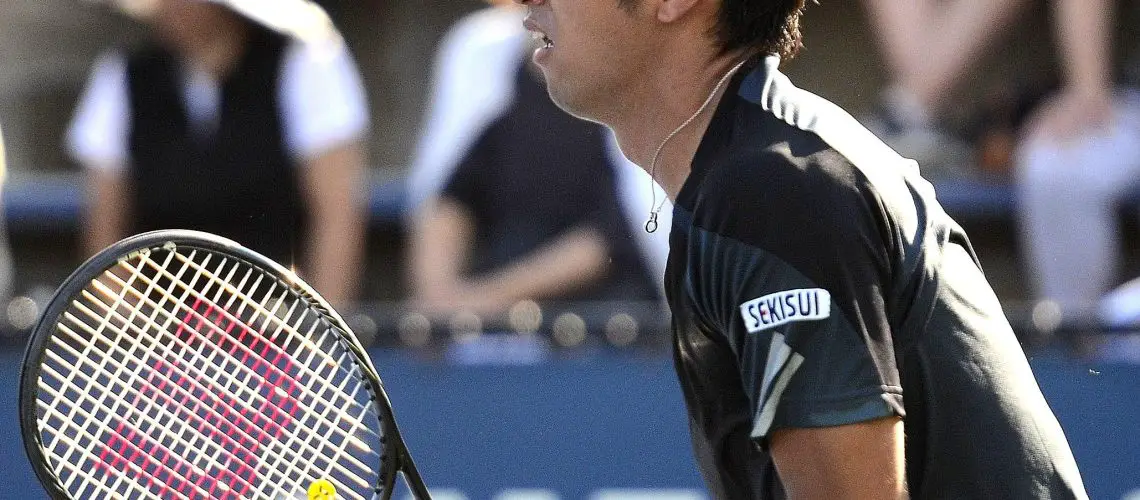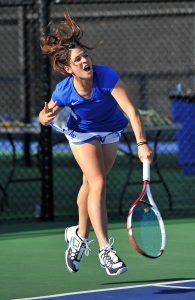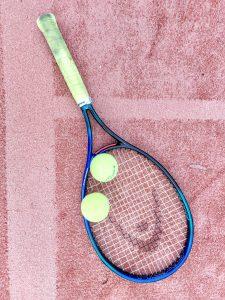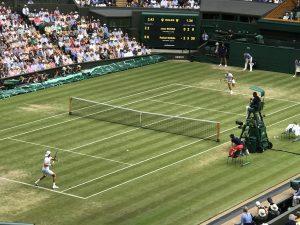We may earn money or products from the companies mentioned in this post.
Introduction

When it comes to playing tennis, having a dry court is of utmost importance A wet or damp court can not only affect the quality of play but also pose a significant risk of injury to the players The drying time of a tennis court depends on various factors, including weather conditions, court surface materials, and maintenance practices In this article, we will explore the importance of a dry tennis court for playing and delve into the factors that can influence its drying time
The Importance of a Dry Tennis Court for Playing
A dry tennis court is crucial for optimal performance and safety during matches or practice sessions When the court is wet or slippery, players may struggle to maintain their footing and execute precise movements This can lead to reduced agility, compromised balance, and an increased risk of falls or twisted ankles
Furthermore, a damp surface affects ball bounce and speed It alters the trajectory and unpredictability of shots, making it difficult for players to anticipate and react appropriately In competitive matches where split-second decisions matter, such variations in ball behavior can significantly impact the outcome
A dry court not only ensures fair play but also enhances player experience It allows them to fully utilize their skills without hindrances caused by unfavorable court conditions Whether it’s executing powerful serves or executing swift volleys at the net, a dry surface provides better control over shots and facilitates more consistent gameplay
Factors Affecting Drying Time
The drying time of a tennis court can vary depending on several factors:
-
Weather Conditions:
The most influential factor in drying time is weather conditions Sunny and windy days promote faster evaporation of moisture from the surface, leading to quicker drying times Conversely, rainy or humid weather prolongs the drying process -
Court Surface Materials:
Different court surfaces have varying porosity and water retention capabilities For instance, clay courts tend to hold more water and require more time to dry compared to hard or grass courts -
Maintenance Practices:
Regular maintenance practices play a crucial role in minimizing drying time Proper drainage systems, effective squeegeeing, and adequate use of absorbent materials like towels can expedite the drying process -
Court Orientation:
The orientation of the tennis court in relation to sunlight can affect drying time Courts that receive direct sunlight for longer durations will dry faster than those shaded by surrounding structures or trees
By understanding these factors, tennis court owners and managers can implement appropriate measures to ensure timely drying and provide optimal playing conditions for players
Overall, maintaining a dry tennis court is essential for player safety, fair play, and an enjoyable tennis experience By considering the factors affecting drying time, court owners can take proactive steps to minimize downtime caused by wet conditions and maximize the quality of play on their courts
Types of Tennis Court Surfaces and their Drying Times

Tennis courts come in various surfaces, each with its unique characteristics and benefits Understanding the different types of court surfaces and their drying times is crucial for players, tournament organizers, and maintenance staff Let’s take a closer look at these surfaces and how long it typically takes for them to dry after rain or irrigation
Hard Courts
1 Acrylic Surface:
An acrylic surface is a popular choice for hard tennis courts due to its durability and low maintenance requirements It provides excellent traction, ensuring players can move swiftly across the court without slipping Additionally, acrylic surfaces offer consistent ball bounce, allowing for more predictable gameplay
The average drying time for an acrylic surface after rainfall or irrigation ranges from 30 minutes to 1 hour, depending on external factors such as weather conditions
2 Concrete Surface:
Concrete tennis courts are known for their longevity and resilience against harsh weather conditions They offer a solid playing surface that allows players to generate powerful shots while maintaining stability
When it comes to drying time, concrete surfaces tend to dry relatively quickly compared to other materials On average, it takes around 15-30 minutes for a concrete court to dry after wetting
Clay Courts
1 Red Clay or Har-Tru Surface:
Red clay or Har-Tru courts provide a unique playing experience characterized by slower ball speed and higher bounces than other surfaces The clay’s granular composition helps absorb moisture from rainfall or irrigation, reducing the risk of water accumulation on the court’s surface
Drying time for red clay or Har-Tru courts depends heavily on external factors such as temperature and humidity levels On average, it may take several hours or even a full day for these courts to dry completely
Grass Courts
1 Natural Grass Surfaces:
Grass courts offer a fast-playing surface that rewards players with well-executed shots and quick footwork The natural grass provides excellent cushioning and allows for low ball bounces, making the game more challenging and exciting
Drying time for grass courts can vary significantly depending on external factors such as weather conditions and soil composition It typically takes several hours or even a couple of days for the grass to dry after substantial rainfall
External Factors Influencing Tennis Court Drying Time

A tennis court’s drying time is not solely determined by its surface material but is also influenced by various external factors:
Weather Conditions
1 Temperature Effects on Drying Times:
The temperature plays a crucial role in how quickly a tennis court dries Higher temperatures promote evaporation, leading to faster drying times, while colder temperatures slow down the process
2 Humidity’s Role in Evaporation Rates:
Humidity levels affect the rate at which moisture evaporates from the court’s surface High humidity inhibits evaporation, prolonging the drying time, whereas lower humidity accelerates it
Wind Speed and Direction
1 How Wind Can Accelerate or Hinder the Process:
Wind speed and direction play a significant role in drying times as they affect evaporation rates Strong winds can help speed up the drying process by increasing air circulation over the court’s surface, while calm conditions may delay drying considerably
Sunlight Exposure
1 The Role of Direct Sunlight in Expediting Moisture Evaporation:
Direct sunlight can significantly expedite the drying process by providing additional heat and energy for evaporation Courts exposed to ample sunlight tend to dry faster than those in shaded areas
Understanding the different tennis court surfaces and their drying times, as well as the external factors influencing them, allows players and maintenance staff to plan accordingly and ensure optimal playing conditions for everyone involved
Methods to Speed Up Tennis Court Drying Process

Manual Techniques to Remove Excess Water
When it comes to getting a tennis court dry and ready for play, manual techniques can often be the most effective One such method is using squeegees, also known as water removers These handy tools are designed specifically for removing excess water from surfaces, making them perfect for tennis courts after rain or irrigation
There are numerous advantages to using squeegees on a tennis court Firstly, they allow for targeted removal of water, ensuring that you only tackle the areas that need drying This saves time and effort compared to waiting for the entire court to dry naturally Additionally, squeegees are easy to use and require minimal training or expertise
To avoid damaging the court surface while using a squeegee, it’s important to follow proper technique Start by positioning the squeegee at an angle against the surface and apply firm pressure as you push it along in one direction Be careful not to press too hard or drag the squeegee too forcefully, as this could cause damage or leave marks on the court
Another manual technique worth considering is using blowers like leaf blowers or power blowers These devices generate strong air currents that can help accelerate the drying process on a tennis court Leaf blowers are commonly used due to their portability and ease of handling
The types of blowers used for tennis court applications vary depending on individual preferences and available resources Some people prefer handheld blowers for their maneuverability, while others opt for backpack-mounted ones for increased power and efficiency
Blowers offer several advantages when it comes to speeding up the drying process of a tennis court They provide quick results by directing airflow directly onto wet areas, allowing the water to evaporate faster However, it’s important to note that blowers may not be suitable for all court surfaces, as some materials may be more sensitive to strong air currents
Drainage System Improvements
Improving the drainage system of a tennis court is another effective way to speed up the drying process By ensuring proper design and functionality, you can minimize standing water and facilitate efficient water removal
When designing or renovating a tennis court, it’s crucial to consider factors such as slope, surface material, and subsurface drainage systems A well-designed court should have adequate slope to allow water to flow away from the playing area Additionally, incorporating features like French drains or perforated pipes beneath the surface can help collect excess water and channel it away from the court
Court Maintenance Practices That Aid Faster-Drying Times
In addition to manual techniques and drainage system improvements, certain maintenance practices can aid in faster drying times for tennis courts Regular sweeping helps remove debris and loose particles that can hinder evaporation and prolong drying time
Applying a hydrophobic sealant on the court surface can also be beneficial This type of sealant forms a protective layer that repels water, allowing it to bead up and roll off rather than being absorbed into the surface As a result, moisture evaporates more quickly
Furthermore, implementing effective irrigation practices can prevent excessive water buildup on tennis courts in the first place By carefully monitoring watering schedules and adjusting them based on weather conditions and usage patterns, you can avoid unnecessary saturation of the playing surface
By combining manual techniques with drainage system improvements and proper maintenance practices, you can significantly reduce drying times for tennis courts after rainfall or irrigation events This ensures that players spend less time waiting and more time enjoying the game they love
Conclusion

After exploring the various aspects of this topic, it is clear that a solid conclusion can leave a lasting impression on readers The power of a well-crafted conclusion lies in its ability to tie together all the main points discussed throughout the article and provide a sense of closure for the reader
One effective strategy for creating an impactful conclusion is to restate the main thesis or argument in a concise and compelling manner By reminding readers of the central idea, they are more likely to remember and reflect upon the key takeaways from the article
In addition to restating the main point, it can also be beneficial to highlight any new insights or perspectives that have emerged through the course of examining different viewpoints and evidence This not only demonstrates critical thinking but also adds depth and complexity to the overall discussion
The Power of Call-to-Action
A call-to-action (CTA) is another powerful tool that can be utilized in a conclusion By encouraging readers to take specific actions or engage further with the topic, you can foster a sense of involvement and motivate them to seek out additional information or share their own experiences
For example, ending an article about sustainable living with a CTA such as “Take small steps today towards creating a greener future” inspires readers to make positive changes in their daily lives This not only leaves them with practical advice but also empowers them to become agents of change
The Importance of Emotional Appeal
Including an emotional appeal in your conclusion can resonate deeply with readers and help create a memorable impact By tapping into their emotions, you can forge a connection that lingers long after they finish reading
Consider incorporating personal anecdotes, inspiring quotes, or thought-provoking statements that evoke strong emotions related to the topic This can be particularly effective in articles discussing sensitive subjects or those that aim to inspire and motivate readers
Ultimately, a well-crafted conclusion has the power to leave a lasting impression on readers, reinforcing the main message of the article and inspiring action or reflection By utilizing strategies such as restating the main point, including a call-to-action, and appealing to emotions, you can create a conclusion that not only engages but also resonates with your audience
Useful Links

Can You Play Tennis In The Rain?
About The Product
Tennis Court Maintenance
The Good, Bad, and Debatable Clay Courts
How to Dry a Wet Court in 8 minutes – YouTube
Can you Play Tennis in the Rain? Here’s What … – TennisLovers
Can You Play Tennis On A Wet Court?
How to Dry Pickleball Courts (All Surface Types)
How Long Does It Take to Resurface a Tennis Court
Drying Vs Curing | Tennis Court Surfaces & Paint
Tennis Court Drying Equipment
Miami Open
Clay Courts – The Fast-Dry/Har-Tru Advantage
Resurfacing Tennis Courts: Best Practices
Life of a Tennis Courts
Synthetic Tennis Court FAQs
Tennis Court FAQs
Tennis Court Surface Specification






